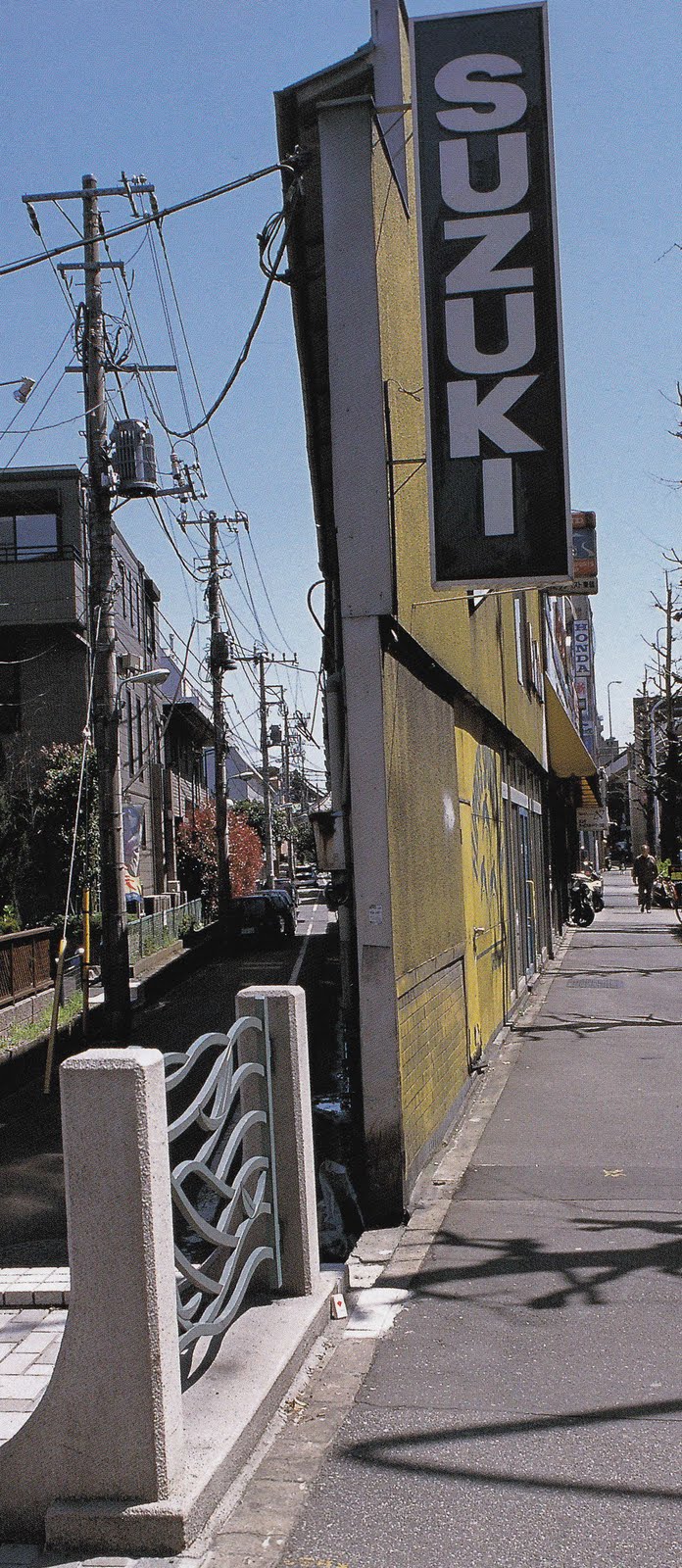Pet Architecture is a book that takes its origins from the consciousness that Tokyo is a complicated city. Even from a brief analysis it is possible to understand that an integrated urban planning has never been done – the metropolis was born as the result of interventions and spontaneous architectures. Moreover, Tokyo is a reality strictly linked with transformation. Many times, in history, Japanese people had to adapt to new events, and they always reacted in a masterly manner.
Anyway, this ability to adapt to new situations doesn’t cover entirely the problems and issues arising. The almost totally lacking strategic planning brought to a high soil consumption and to a new architectural typology due to specific exigencies. In particular buildings are planned to fit interstitial spaces and some of these creations are worth to be studied because of their singularity.
The atelier Bow Wow studied Japanese buildings in his book “Pet architecture”. The architects-researchers Tsukamoto and Kajima analyzed and collected in a book the little buildings with which Tokyo is filled, sponsoring in this way the sometimes extreme usage of space. Beside this research project, they also planned and produced some of these “small spaces”. There are numerous buildings in which they were able to obtain exploitable spaces, where few others architects could have done the same.
Is Pet Architecture a contradiction?
Reading Pet Architecture we can maybe find a contradiction: why does architecture doesn’t try to solve the problems linked to soil excessive consumption?
One of the tasks of architecture is certainly to manage the space at its best and the two Japanese architects can be considered masters in that field. Anyway, if we observe the issue from another point of view, we understand that a good educator (architecture has to educate also) would have avoided to fill every free space with this particular pet architecture, avoiding to further choke the city.
On these theme it is worth to take into consideration the step toward this direction done by the “Metabolists”, in the 50s. They tried to imagine solutions in order to leave a free part of the landscape of the Japanese capital.









2 Responses